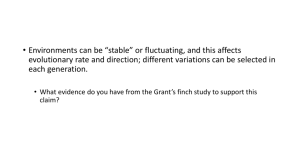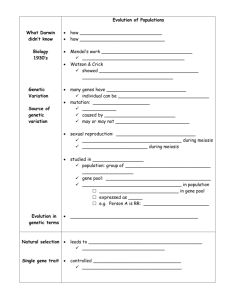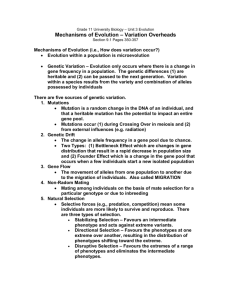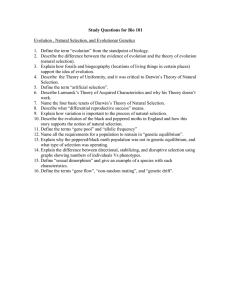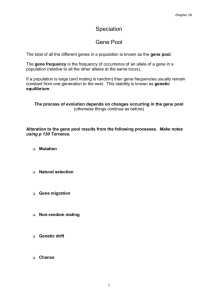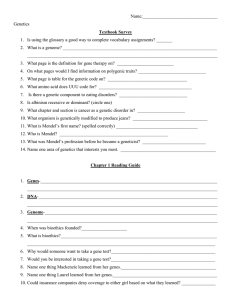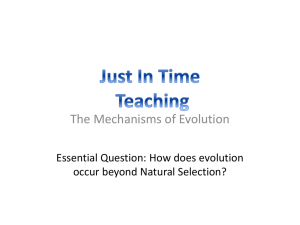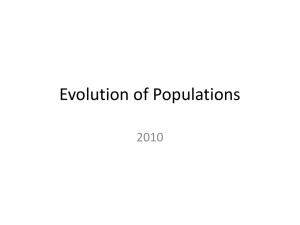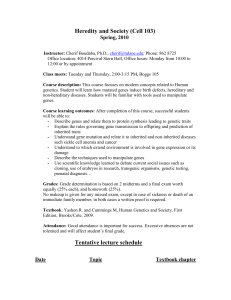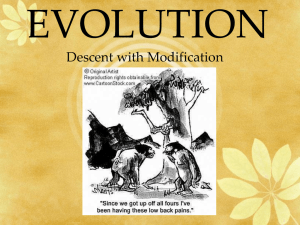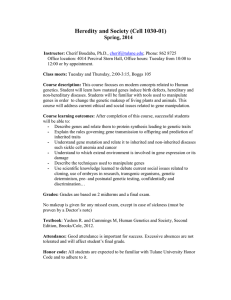Disruptions to Genetic Equilibrium 2013
advertisement
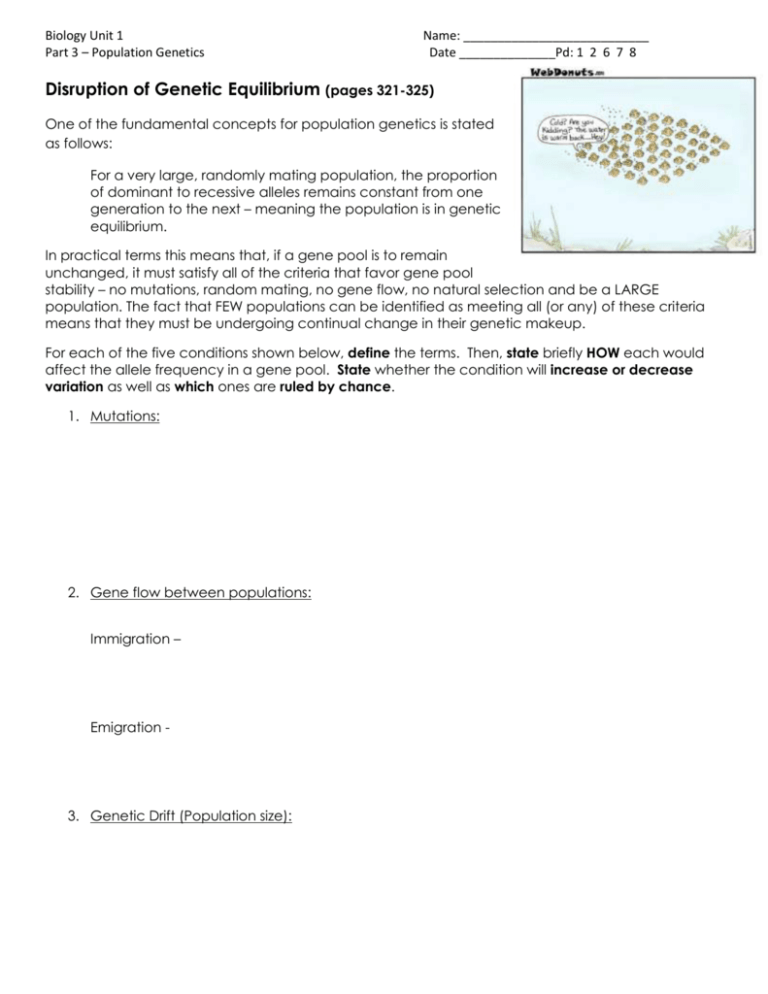
Biology Unit 1 Part 3 – Population Genetics Name: ___________________________ Date ______________Pd: 1 2 6 7 8 Disruption of Genetic Equilibrium (pages 321-325) One of the fundamental concepts for population genetics is stated as follows: For a very large, randomly mating population, the proportion of dominant to recessive alleles remains constant from one generation to the next – meaning the population is in genetic equilibrium. In practical terms this means that, if a gene pool is to remain unchanged, it must satisfy all of the criteria that favor gene pool stability – no mutations, random mating, no gene flow, no natural selection and be a LARGE population. The fact that FEW populations can be identified as meeting all (or any) of these criteria means that they must be undergoing continual change in their genetic makeup. For each of the five conditions shown below, define the terms. Then, state briefly HOW each would affect the allele frequency in a gene pool. State whether the condition will increase or decrease variation as well as which ones are ruled by chance. 1. Mutations: 2. Gene flow between populations: Immigration – Emigration - 3. Genetic Drift (Population size): 4. Sexual Selection: 5. Natural Selection: Draw a graphical representation for each type of natural selection and explain the graph. Define each type of natural selection and state its impact on variation. Stabilizing selection: Disruptive selection: Directional selection:
